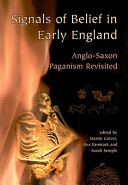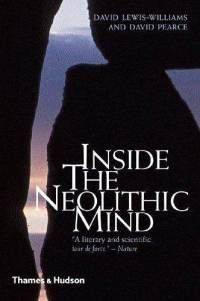
The Paleolithic or Palaeolithic, also called the Old Stone Age, is a period in human prehistory that is distinguished by the original development of stone tools, and which represents almost the entire period of human prehistoric technology. It extends from the earliest known use of stone tools by hominins, c. 3.3 million years ago, to the end of the Pleistocene, c. 11,650 cal BP.

Old Norse religion, also known as Norse paganism, is the most common name for a branch of Germanic religion which developed during the Proto-Norse period, when the North Germanic peoples separated into a distinct branch of the Germanic peoples. It was replaced by Christianity and forgotten during the Christianisation of Scandinavia. Scholars reconstruct aspects of North Germanic Religion by historical linguistics, archaeology, toponymy, and records left by North Germanic peoples, such as runic inscriptions in the Younger Futhark, a distinctly North Germanic extension of the runic alphabet. Numerous Old Norse works dated to the 13th-century record Norse mythology, a component of North Germanic religion.

The Sorcerer is one name for an enigmatic cave painting found in the cavern known as 'The Sanctuary' at the Cave of the Trois-Frères, Ariège, France, made around 13,000 BCE. The figure's significance is unknown, but it is usually interpreted as some kind of great spirit or master of animals. The unusual nature of The Sanctuary's decoration may also reflect the practice of magical ceremonies in the chamber. In his sketches of the cave art, Henri Breuil drew a horned humanoid torso and the publication of this drawing in the 1920s influenced many subsequent theories about the figure. However, Breuil's sketch has also come under criticism in recent years. A single prominent human figure is unusual in the cave paintings of the Upper Paleolithic, where the great majority of representations are of animals.

Anglo-Saxon paganism, sometimes termed Anglo-Saxon heathenism, Anglo-Saxon pre-Christian religion, or Anglo-Saxon traditional religion, refers to the religious beliefs and practices followed by the Anglo-Saxons between the 5th and 8th centuries AD, during the initial period of Early Medieval England. A variant of Germanic paganism found across much of north-western Europe, it encompassed a heterogeneous variety of beliefs and cultic practices, with much regional variation.

James David Lewis-Williams is a South African archaeologist. He is best known for his research on southern African San (Bushmen) rock art. He is the founder and previous director of the Rock Art Research Institute and is currently professor emeritus of cognitive archaeology at the University of the Witwatersrand (WITS).

Paleolithic religions are a set of spiritual beliefs and practices that are theorized to have appeared during the Paleolithic time period. Paleoanthropologists Andre Leroi-Gourhan and Annette Michelson believe unmistakably religious behaviour emerged by the Upper Paleolithic, before 30,000 years ago at the latest, but behavioral patterns such as burial rites that one might characterize as religious — or as ancestral to religious behaviour — reach back into the Middle Paleolithic, as early as 300,000 years ago, coinciding with the first appearance of Homo neanderthalensis and possibly Homo naledi.

Jean Clottes is a prominent French prehistorian. He was born in the French Pyrenees in 1933 and began to study archaeology in 1959, while teaching high school. He initially focused on Neolithic dolmens, which were the topic of his 1975 Ph.D. thesis at the University of Toulouse. After being appointed director of prehistoric antiquities for the Midi-Pyrénées in 1971, he began to study prehistoric cave art in order to fulfill the responsibilities of that position. In the following years he led a series of excavations of prehistoric sites in the region. In 1992, he was named General Inspector for Archaeology at the French Ministry of Culture; in 1993 he was appointed Scientific Advisor for prehistoric rock art at the French Ministry of Culture. He formally retired in 1999, but remains an active contributor to the field.

In Old Norse, seiðr was a type of magic which was practised in Norse society during the Late Scandinavian Iron Age. The practice of seiðr is believed to be a form of magic which is related to both the telling and the shaping of the future. Connected to the Old Norse religion, its origins are largely unknown, and the practice of it gradually declined after the Christianization of Scandinavia. Accounts of seiðr later made it into sagas and other literary sources, while further evidence of it has been unearthed by archaeologists. Various scholars have debated the nature of seiðr, some of them have argued that it was shamanic in context, involving visionary journeys by its practitioners.
Magic in Anglo-Saxon England refers to the belief and practice of magic by the Anglo-Saxons between the fifth and eleventh centuries AD in Early Mediaeval England. In this period, magical practices were used for a variety of reasons, but from the available evidence it appears that they were predominantly used for healing ailments and creating amulets, although it is apparent that at times they were also used to curse.
Pagan studies is the multidisciplinary academic field devoted to the study of modern paganism, a broad assortment of modern religious movements, which are typically influenced by or claiming to be derived from the various pagan beliefs of premodern Europe. Pagan studies embrace a variety of different scholarly approaches to studying such religions, drawing from history, sociology, anthropology, archaeology, folkloristics, theology and other religious studies.

Signals of Belief in Early England: Anglo-Saxon Paganism Revisited is an academic anthology edited by the British archaeologists Martin Carver, Alex Sanmark and Sarah Semple which was first published by Oxbow Books in 2010. Containing nine separate papers produced by various scholars working in the fields of Anglo-Saxon archaeology and Anglo-Saxon history, the book presents a number of new perspectives on Anglo-Saxon paganism and, to a lesser extent, early Anglo-Saxon Christianity. The collection – published in honour of the archaeologist Audrey Meaney – was put together on the basis of a conference on "Paganism and Popular Practice" held at the University of Oxford in 2005.

The Viking Way: Religion and War in Late Iron Age Scandinavia is an archaeological study of old Norse religion in Late Iron Age-Scandinavia. It was written by the English archaeologist Neil Price, then a professor at the University of Aberdeen, and first published by the Department of Archaeology and Ancient History at Uppsala University in 2002. A revised second edition is due to be published in 2017 by Oxbow Books.

Aspects of Anglo-Saxon Magic is a study of Anglo-Saxon paganism and the role of magic in Anglo-Saxon England that was written by the English poet and independent scholar Bill Griffiths. It was first published in 1996 by Anglo-Saxon Books, and later republished in a revised edition in 2003.
Neil Stuppel Price is an English archaeologist specialising in the study of Viking Age-Scandinavia and the archaeology of shamanism. He is currently a professor in the Department of Archaeology and Ancient History at Uppsala University, Sweden.

The Archaeology of Shamanism is an academic anthology edited by the English archaeologist Neil Price which was first published by Routledge in 2001. Containing fourteen separate papers produced by various scholars working in the disciplines of archaeology and anthropology, it looks at the manner in which archaeologists can interpret shamanism in the archaeological record.
Audrey Lilian Meaney was an archaeologist and historian specialising in the study of Anglo-Saxon England. She published several books on the subject, including Gazetteer of Early Anglo-Saxon Burial Sites (1964) and Anglo-Saxon Amulets and Curing Stones (1981).

Shamans: Siberian Spirituality and the Western Imagination is a historical study of how westerners have viewed the shamans of Siberia. It was written by the English historian Ronald Hutton, then working at the University of Bristol, and first published by Hambledon and London in 2001. Prior to writing Shamans, Hutton had authored a series of books on such subjects as Early Modern Britain, pre-Christian religion, British folklore and Contemporary Paganism.

Inside the Neolithic Mind: Consciousness, Cosmos and the Realm of the Gods is a cognitive archaeological study of Neolithic religious beliefs in Europe co-written by the archaeologists David Lewis-Williams and David Pearce, both of the University of the Witwatersrand in Johannesburg, South Africa. It was first published by Thames and Hudson in 2005. Following on from Lewis-Williams' earlier work, The Mind in the Cave (2002), the book discusses the role of human cognition in the development of religion and Neolithic art.

Prehistoric religion is the religious practice of prehistoric cultures. Prehistory, the period before written records, makes up the bulk of human experience; over 99% of human history occurred during the Paleolithic period alone. Prehistoric cultures spanned the globe and existed for over two and a half million years; their religious practices were many and varied, and the study of them is difficult due to the lack of written records describing the details of their faiths.














